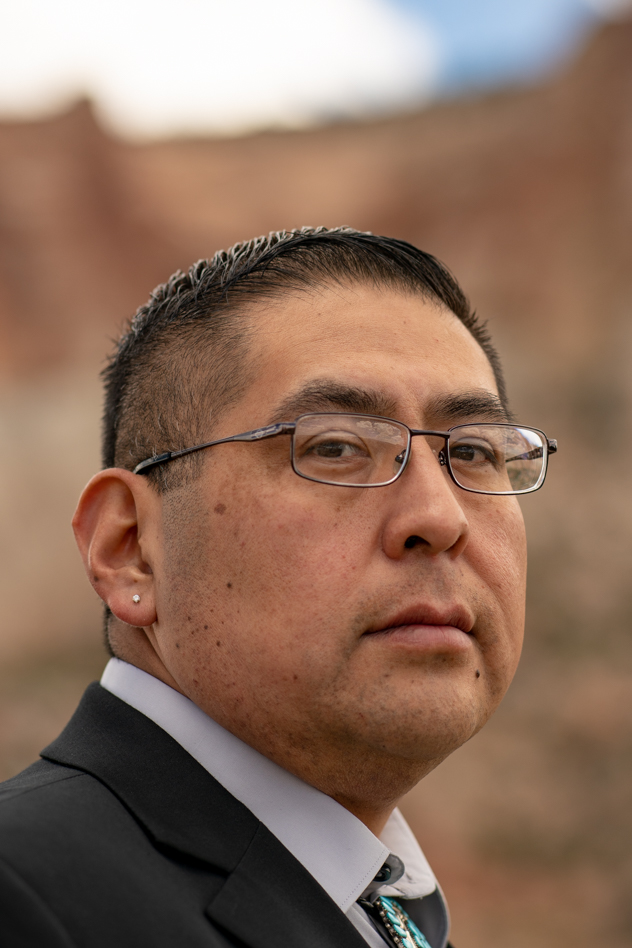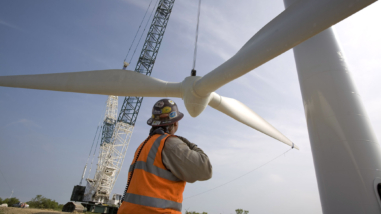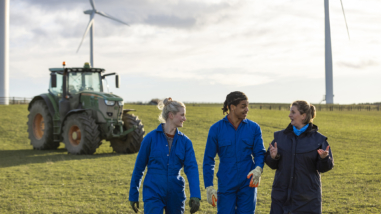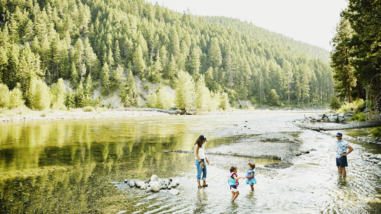Protecting sacred land for the next generation: Bears Ears Inter-Tribal Coalition’s Carleton Bowekaty
CB: Conservation is important to me because it’s a reflection of our values: never take more than what you need and have the right frame of mind when approaching the land. We Zuni say that if your heart and mind aren’t in the right place, certain things won’t be revealed to you. That’s the idea behind conservation: if you go out and do something, make sure you have the right mindset. Conservation in the Western mind is different than in how Zuni approach it. We look at the long-term impacts and have it reflect what we aim to do.
At the heart of it, we are looking at the longevity of resources, not just for our generation to use, but to have it ready and available for the next generation. My godfather would say that he wants to make sure that the things we’re doing today are the same things we’re doing 100 years from now. Because we’ve lost so much over time, what we can do is carve out our defenses and have more people know things so that way it’s not a burden and we can continue to have these things long after we’re gone. Conservation is essential, so my kids can do what I’m doing now.
MAE: Why does Bears Ears matter to you, to Zuni?
CB: Bears Ears shows how long we’ve been here, that we’re a part of something bigger than what we see here. I remember going to Mesa Verde National Park, Chaco Canyon, and other trips that I did as a kid in elementary school, which made me realize that hey, there is a bigger part of Zuni. To be able to work in Mesa Verde later, after visiting two or three times as a youth, to be able to go there and work as a college student, it made me expand on my notion of Zuni. I feel that if our youth understand that they are bigger than what’s here – like I’ve personally felt – being up in Bears Ears, for example, they can see that we’re a part of something bigger.
MAE: What do you do as co-chair of the Bears Ears Inter-Tribal Coalition?
CB: My role as co-chair has been to provide the institutional knowledge between the different various forms that the Bears Ears coalition has taken. From the work of advocating [on behalf of the Bears Ears National Monument] to President Obama, to the actual proclamation and trying to work under the Bears Ears Commission for a short period of time before the Trump Administration had their proclamation put in. Trying to navigate the waters between those and understanding why we’re at the point we’re at now. That’s been it: facilitating the path for the people who need to do the work.
For example, to allow the cultural resources advisers to be able to provide the information we need, the interpretation we need of the Ancestral Puebloan landscape there; to allow for our natural resources folks to go up there and do their work they need to do as far as making sure that the management is in line with what we believe here. All of that should be reflected in the land management plan we’re building. The idea is, overall, to preserve the tribal importance of this area and why this area is important not just to tribes but to America in general.
MAE: Has it helped you heal or grow?
CB: Bears Ears has been, I guess for me, one of the things that has helped me grow not just as a political leader, but also as a human being, again. PTSD, anger management, all those things, you can find different ways to deal with it but in the end, if you’re not ready to make those changes within yourself, then you’re going to upend the whole thing. My involvement in Bears Ears has not only led to personal and spiritual growth but also to my growth as a tribal leader. Being able to interact with other tribal leaders with the same intent, with the same drive, being able to think outside of the box with them, and eventually be able to advocate in D.C. with the same group of folks who have the same vision and understanding [of] why it’s important to them and respecting that. Understanding that they’re expecting the longevity to be encompassed with whoever continues the work.
MAE: What do you want to leave behind?
CB: I want to help the youth here in Zuni realize that for us as a people, it’s about enduring, it is about being resilient, it is about being patient and being prepared. Being patient isn’t being lazy; being patient is making sure you’re ready in your heart, in your mind. If you’re a child, go to school – be educated. If you’re a parent, make sure your kids are well-fed, have a stable home so [they’re] able to learn. These are the things that we’re hoping to demonstrate as our core values.
MAE: What do you tell your kids about Bears Ears and the work you’re doing?
CB: I try to explain to them why our voice is important here in Bears Ears, why it’s important to see the bigger picture of the Zuni not just through the lens of the reservation, but the lens of the importance we as Zuni have throughout the Southwest. If you listen to our oral history, elements of our people are what allowed the Southwest to survive: the seeds, the corn, the ability to grow, the ceremonies that went along with it. Zuni have always been strong in that. My belief is that we helped provide avenues to support survival.
Michael A. Estrada is a first-generation, Salvadoran-American photojournalist and artist. His work falls at the intersection of environment, justice, art, and the representation of folks of color in media. He is also the founder of Brown Environmentalist.





